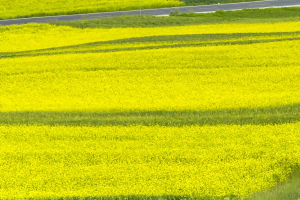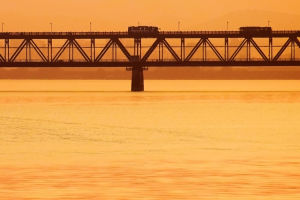When we venture out for leisure, we often encounter the mesmerizing sight of lakes adorned in shades of green. The captivating coloration of lake water can be attributed primarily to the optical properties inherent to the water itself.
In essence, water possesses the ability to absorb, reflect, and scatter sunlight. The prevalence of suspended matter and larger particles within lakes results in a weak absorption of green light and a pronounced scattering effect, imparting a predominantly light blue or green hue to the water.
The coloration of lake water is further influenced by its depth. Only when the water reaches a depth exceeding five meters does it begin to absorb light of various colors, predominantly reflecting the blue spectrum. Sunlight, consisting of seven colors ranging from red to violet, is characterized by varying wavelengths. The gradual decrease in wavelength from red to violet implies that longer waves, with greater penetrating power, are more susceptible to absorption by water molecules. Conversely, shorter waves exhibit weaker penetrating power, making them prone to reflection and scattering.
Typically, in waters exceeding 100 meters in depth, the majority of light across different wavelengths is absorbed by the water. This absorption contributes to an increase in the temperature of the lake water. When relatively pure water molecules encounter blue and violet light with shorter wavelengths, these waves undergo strong scattering and reflection, resulting in the lake exhibiting shades of green or dark blue.
Human eyes, being inherently biased, possess limited sensitivity to violet light. Consequently, the human eye often overlooks the subtle play of purple light reflected by the lake's waters. In contrast, human eyes are more attuned to blue and green light, accentuating the perception of lakes as green or blue.
The size and depth of a lake play a crucial role in its coloration. Smaller lakes with shallower depths may lack the capacity to absorb green light adequately. When combined with the presence of green vegetation, such as trees surrounding the lake, the overall effect enhances the perception of the lake as predominantly green.
Furthermore, lakes often harbor a multitude of algae, impacting the coloration of the water. Inadequate water circulation can lead to an accumulation of nitrogen, a key nutrient for algae growth. This abundance of algae, with transparent outer layers and chloroplasts within their bodies, contributes to the green appearance of the water. In cases where rivers are heavily polluted, leading to eutrophication, the proliferation of algae intensifies, accentuating the green tint of the lake.
The type of algae present in a lake can also influence its color palette. Lakes experiencing Microcystis blooms may showcase shades of yellow-green or blue-green, while crypto algal blooms result in reddish-brown or brownish-green hues. Lakes with golden algae blooms exhibit a distinctive golden-brown tint, and certain high-saline environments, like those in Senegal, host algae that imparts a peculiar pink hue to the lake.
In essence, the kaleidoscopic display of colors in lakes is a testament to the intricate interplay of light, water, and biological elements. Each lake, with its unique combination of size, depth, vegetation, and algal composition, becomes a canvas upon which nature paints its mesmerizing hues—a true testament to the enchanting magic wielded by the great magicians of the lake.


